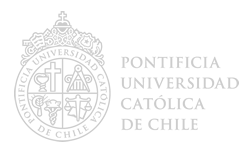Nutritional and functional characterization of wild and cultivated Sarcocornia neei grown in Chile
Abstract
Sarcocornia neei is a halophyte that grows on the coast of the Valparaiso Region of Chile. Studies related to its nutritional and functional value under wild and cultivated conditions are not available. Thus, in this study, a nutritional (complete proximal, mineral and dietary fiber analysis) and functional characterization (total phenolics, β-carotene, hydrophilic and lipophilic antioxidant activity (HAA and LAA) and ascorbic acid) were performed for wild and cultivated plants. Wild plants displayed higher amounts of compounds involved in stress defense mechanisms such as total phenolics, proteins, dietary fiber and ash. The mineral analysis revealed that Na+ and Cl- are the main ions accumulated in wild and cultivated Sarcocornia neei that are present in significantly higher amounts in the cultivated plants. The functional characterization revealed higher amounts of dietary fiber, total phenolics and HAA in wild plants than in cultivated plants. Similar contents of β-carotene, LAA and ascorbic acid were found for wild and cultivated plants. The results from this study provide information on the potential of Sarcocornia neei to be consumed as a leafy green vegetable with important amounts of main nutrients and functional metabolites.
La halófita Sarcocornia neei es un vegetal que crece en las costas de la V región en Chile. Estudios relacionados con su valor nutricional y funcional bajo condiciones silvestres y cultivadas no están disponibles. Por lo tanto, en este estudio se realizó una caracterización nutricional (proximal completo, análisis mineral y de fibra dietaria) y funcional (fenoles totales, β-caroteno, actividad antioxidante hidrofílica (AAH) y lipofílica (AAL) y ácido ascórbico) en las plantas silvestres y cultivadas. En las plantas silvestres se visualizó una mayor cantidad de compuestos relacionados con el mecanismo de defensa del estrés tales como fenoles totales, proteínas, fibra dietaria y cenizas. El análisis mineral reveló que los iones mayormente acumulados son Na+ y Cl- en las plantas silvestres y cultivadas, siendo mayor en las plantas cultivadas. La caracterización funcional reveló una mayor cantidad de fibra dietaria, fenoles totales y AAH en las plantas silvestres que en las plantas cultivadas. Contenidos similares de β-caroteno, AAL y ácido ascórbico fueron encontrados en las plantas silvestres y cultivadas. Los resultados de este análisis proporcionan evidencia sobre el potencial de Sarcoconia neei para ser consumida como un vegetal de hoja verde con importantes cantidades de nutrientes principales y metabolitos funcionales.

